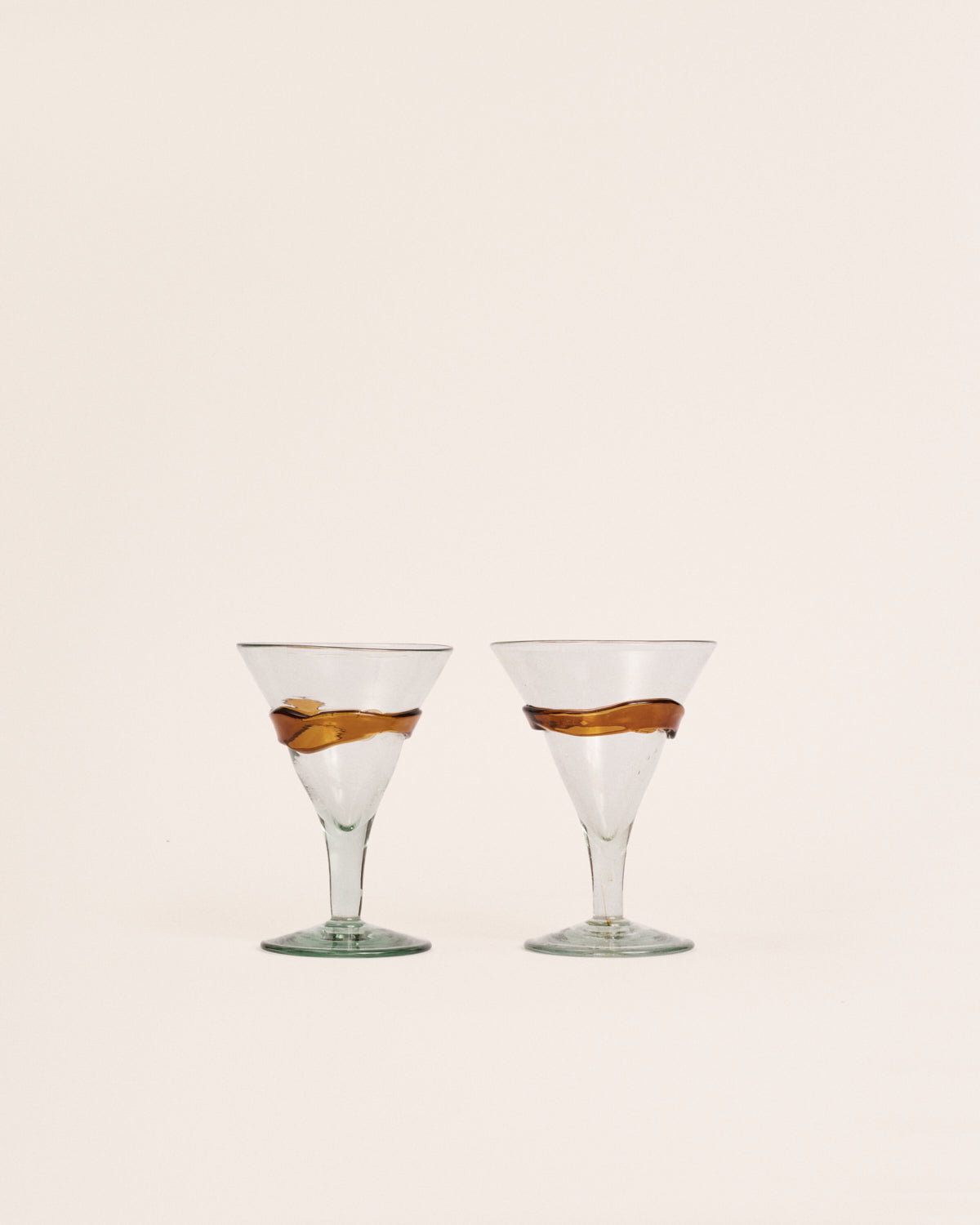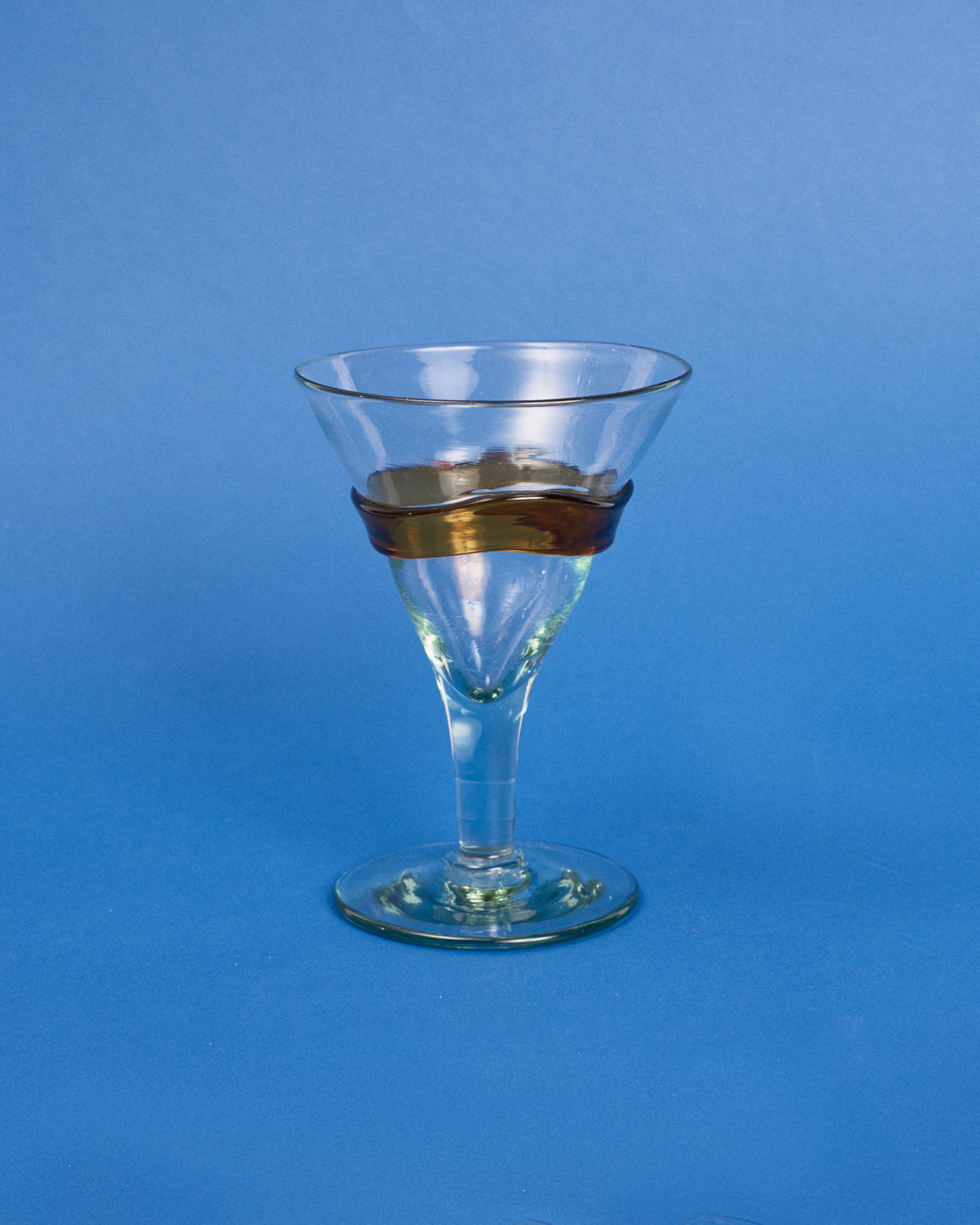Pair of topaz spatter glasses
- Regular price
- 150,00 €
- Regular price
-
- Sale price
- 150,00 €
- Unit price
- for
Low in stock
Couldn't load pickup availability
Set of 2 triangular glasses for wine, Martini or ice cream. Hand blown glass with a central border in amethyst topaz. Made in Mallorca. The slight differences and irregularities in design and finish are part of the unique character and charm of craftsmanship. No two pieces are alike, they are all different and exclusive.
The art of Balearic glassblowing dates back to the 2nd century BC and consists of introducing an iron tube (the canya) into a quantity of molten glass. The opposite end is then blown and the glass is blown up as if it were a balloon. To work this 'balloon', the tube is turned in both directions and the blower gives it shape using wet newspaper, moulds, different instruments, or even by hand. When the piece is finished, it is separated from the tube. The puntill is what remains of the union between the cane and the object, and can be seen at its base.
The art of Balearic glassblowing dates back to the 2nd century BC and consists of introducing an iron tube (the canya) into a quantity of molten glass. The opposite end is then blown and the glass is blown up as if it were a balloon. To work this 'balloon', the tube is turned in both directions and the blower gives it shape using wet newspaper, moulds, different instruments, or even by hand. When the piece is finished, it is separated from the tube. The puntill is what remains of the union between the cane and the object, and can be seen at its base.
Materials
Materials
Dimensions
Dimensions
Instructions for use
Instructions for use
Compartir



